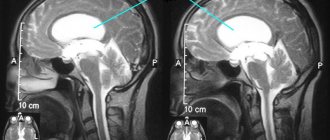Definition of a collective
From Latin collectivus is translated as “collective.” Therefore, we can say that a team is a certain group consisting of an N number of people united by common interests, ideas, tasks, and needs.
Any human activity requires participation in one community or another. Therefore, the concept of collective is defined not only by psychologists, but also by teachers. Opinions may differ somewhat, but the main essence is interpreted the same.
Concept in psychology
A group means a meeting, a crowd (gathering) of people, etc. For them to become a collective, there must be an organization present. If we “dig” deeper, then in psychology the definition of a collective is a community that carries out joint activities through interpersonal relationships, where the contribution of each individual is significant.
Teachers' opinion
Grouping of preschoolers, pupils, and students is classified as a group of pupils. Such communities are somewhat different from industrial ones. If a team in psychology is people united to jointly solve certain problems and perform specific functions, then in pedagogy the interpretation is slightly different.
Team of students
The co-presence of children in the group is an intermediate step that prepares for further activities. The goal of the workforce is to make a certain contribution to society. While the pedagogical group is engaged in the formation of an individual who should become useful to society.
Diagnostics of relationships in a team
The success of team development is studied using a sociogram. It is based on the identification of referent (significant) people and groups, which in turn are made up of preferences, and preferences from sympathies.
Each team member is asked to identify two pleasant people and two unpleasant ones (with whom he would like to work and with whom he would not want). All results are recorded in the form of a circle (the initials of the team members). Arrows (connections) are placed between the initials. Such a sociogram allows you to:
- identify a potential asset;
- potential leader;
- outcasts.
What is meant by an ideal team?
Social perception - what is it in psychology
Any association of people is a certain atmosphere of relationships, it is influenced by the human factor. One can only dream of an ideal team. You can really get closer to the standard if you follow these principles:
- people united in a group must have a joint significant goal aimed at the benefit of society and not contradicting state norms;
- each team member participating in joint activities is interested in a positive result and bears responsibility on an equal basis with everyone else;
- the specificity of relationships in the team is visible not only in working cohesion, but also in moral cohesion;
- one of the principles of the team is democracy; management bodies are an authority for subordinates, and at the same time, managers respect those who stand on the lower steps of the hierarchy, listening to their opinions.
Additional Information. Ideally, a team is highly organized, where such characteristics as mutual understanding, “a sense of community,” selfless relationships, and goodwill are manifested.
In a friendly team, there is a completely different attitude towards work and responsibilities. Members of an ideal community are able to intelligently combine public and personal interests without compromising production and family.
Content and structure of team psychology
Content
INTRODUCTION…………………………………………………………………………………………………………………. 2
CHAPTER 1. Theoretical aspects of interpersonal relationships………………………….. 5
1.1 Content and structure of team psychology………………………………….. 5
1.2 Group interaction…………………………………………………………………….10
1.3 Personality and communication in the system of social and interpersonal relations……………………………………………………………………………………….. .14
CHAPTER 2. Analysis and application of theoretical knowledge of psychology……………….. .16
2.1 Principles and methods of diagnosis……………………………………………………….16
2.2 Polygraph tests as a means of normalizing interpersonal relationships in a team………………………………………………………….. .19
2.3 Practical analysis of two enterprises……………………………………………. .22
CONCLUSION………………………………………………………………………………………………. .27
LITERATURE……………………………………………………………………………………………… .30
APPLICATION………………………………………………………………………………………………. .32
INTRODUCTION
Attitudes towards work and colleagues are stable feelings, expressed in beliefs and types of behavior, they are aimed at production activities. Members of your working group. Organizational environment. The most important indicator of attitude towards production activities is job satisfaction. The degree of job satisfaction affects the effectiveness of the organization. Job satisfaction can be assessed using ranking theories or questionnaires. Critical situations. And also through interviews.
Relations between employees in an organization are formed taking into account both the interests of production. So does the psychological compatibility of group members. Their perceptions of each other. It is on these two parameters that the well-known classification of types of relationships in a work team, proposed by R. Blake and J. Mouton, is based. They identified five main types of relationships in organizations: “laissez-faire,” “warm,” “middle ground,” and “team.” The cohesion of the group depends on the dominant type of relationships in the team. Cohesion refers to the level of psychological community. The stability of interpersonal relationships, interactions and the degree of emotional attractiveness of the group for its members.
The cohesion of the group also depends on this. how attractive her members seem to each other. Sociometric studies are often used for this purpose. The data of which helps to recreate the picture of relationships in the group and the personal position of each person in it. His sociometric status in the group is influenced by many things: mental talent, appearance, professional suitability. Sociability and other factors.
Therefore, the problem of studying interpersonal relationships in a team becomes very relevant. Today, the psychological press talks a lot about interpersonal interaction in an organization, but not all aspects of this problem have been developed, and in particular, the features of interpersonal relationships have not been touched upon. We know that an organization does not stand still, it develops, moves from one stage of development to another, therefore, at each stage its own interpersonal relationships are built, which have certain specifics. Consequently, there is a need to regulate interpersonal relationships, which is a scientific novelty. If a manager does not know how to regulate interpersonal relationships in a team and does not know their specifics at different stages of the organization’s development, then such an organization suffers economic collapse. All this determined the choice of the research topic. In this work, the goal is clearly visible: to identify and analyze the characteristics of interpersonal relationships in a team at different stages of organizational development.
Currently in psychology there are a huge number of specific methodological techniques for studying interpersonal relationships. Therefore, we will limit ourselves to considering only some of the most common ones.
A taxonomy of methods for psychodiagnostic assessment of interpersonal relationships is possible on various grounds:
· based on the object (diagnosis of relations between groups, intragroup processes);
· based on the tasks solved by the survey (identification of group cohesion, compatibility, etc.);
· based on the characteristics of the methods used (questionnaires, projective methods);
· based on the starting point for diagnosing interpersonal relationships (methods of subjective preferences, etc.);[1]
One way or another, no matter what method is chosen, the problem of interpersonal relationships is now very high in the management and formation of a team at an enterprise. The correct solution to this problem contributes to excellent business conduct and, in particular, a prosperous atmosphere in the team. The work is useful for organizational psychologists because it assumes a methodologically new, meaningfully deep (in the sense of the psychological structures being studied) approach to the consideration of interpersonal relationships in a team. A promising result may be the drawing up of forecasts regarding the behavior of employees in situations of interpersonal interaction and the productivity of their work. This study of the structures of ideas regarding relationships within a team can be used:
1) when assessing a candidate for a vacant position
2) to form teams with a high level of cohesion and coherence;
3) for fine diagnosis and prediction of difficulties in the socio-psychological climate of the team.
CHAPTER 1. Interpersonal relations in the organization
Content and structure of team psychology
A team is a group of people united by common goals and objectives, which in the process of joint activities has achieved a high level of development.
The production team is a typical representative of an organized social group. Its subject-object structure usually includes two main levels: the management level and the execution level.
The main feature of the work team is that the human factor influences the final result of work through face-to-face relationships. This means that much (or almost everything) in the business contacts of members of the work team depends on interpersonal relationships.
Characteristics of the psychology of a team include interpersonal relationships in it, moods, opinions of the team, traditions and psychological climate.
The psychological climate of a team, in a certain sense, is an integral characteristic of its psychology; it reflects interpersonal relationships, mood, etc.
The psychological climate of the production team is determined by the nature of business relationships and interactions, individual character and personality traits.[2]
The psychology of business relationships is determined by the goals and objectives of collective work. The psychology of interpersonal relationships is determined by the characteristics of mutual perception and the assessment of the individual by others. Psychological compatibility of team members in business and interpersonal contacts.
A special type of interpersonal relationships is formed in the work team. Which are characterized by:
· high cohesion;
· collectivist self-determination as opposed to conformity or non-conformity, manifested in groups of a low level of development;
· collectivist integration;
· socially valuable nature of motivation for interpersonal choices;
· high referentiality of team members in relation to each other;
· high objectivity in assigning and accepting responsibility for the results of joint activities.[3]
A number of socio-psychological patterns appear in work collectives. Which are qualitatively different from the patterns in low development groups. So,
· as the team increases, the contribution made by its members does not decrease, the level of effective group emotional identification does not decrease, and the motivation for joint activities does not weaken;
· there are no sharp contradictions between group and individual interests;
· there is a positive connection between effective joint activities and a favorable psychological climate;
· the best opportunities for integration and personalization are created. In random communities, the provision of assistance to the victim decreases with an increase in the number of eyewitnesses; in a team, this effect is absent.[4]
One of the important concepts characterizing the work team is the concept of cohesion. The cohesion of a group is the mutual attraction of its members. Cohesion of the work collective is one of the processes of group dynamics, characterizing the degree of commitment to the group of its members. Its degree may be. Naturally, different. As for the highest level of cohesion, within the framework of psychological interpretation this concept includes the following features:
· level of mutual sympathy in interpersonal relationships: the more team members like each other, the higher its cohesion;
· the degree of attractiveness and usefulness of the team for its members: the more people are satisfied with their stay in the team, the higher the power of its attraction and cohesion;
· similarity of basic value orientations of team members: all its members are united by a community of interests;
· clarity and certainty of collective goals accepted by all members of the team;
· coincidence in most cases of personal interests of individuals with corporate interests;
· cooperative interdependence of team members in joint activities: they interact positively with each other not only as workers, functionaries, but also as comrades, buddies, friends;
· democratic leadership style: the leader of the work team is an object of respect, adoration, and veneration;
· acceptance of normative requirements by team members: they are easily and without coercion “from above”, “from below” and “from the side”;
· carrying out business (formal) communication as informal: team members call each other simply by name and first name; This often applies to the manager, and he accepts and supports such communication. Of course, in those situations where it is psychologically justified and acceptable in the interests of the team. For example, a newcomer to the work team is unlikely to be psychologically ready for this, and he hardly has the rights to this form of communication;
· the positive emotional background of communication between team members: it is rich in people’s emotional experiences for each other both at work and outside of it;
· meetings of team members in a non-official setting: people often and willingly spend time together, celebrate official and personal dates and special events together, and participate in leisure activities;
· constructive resolution of conflicts arising within the framework of joint activities and interpersonal relationships: in the style of partnership, i.e. mutual benefit, not the victory of one side and the defeat of the other side;
· fairly high prestige of the team in the eyes of its members;
· absence of informal small groups in the workforce and informal leaders.
Factors ensuring team cohesion:
· attractiveness of team members, i.e. the degree of sympathy experienced by those around them;
· similarity of views, attitudes, values;
· similarity of attitude towards group goals, which is based on their compliance with the needs of team members;
· the nature of the relationship between team members based on their adoption of a common strategy of behavior;
· satisfaction with group activities;
· nature of leadership and decision-making;
· prestige of the team;
· rivalry with another team or teams.[5]
Along with cohesion in a team, there can be tension. It is caused by the unification of people with different positions and views. Behavior patterns, plans and needs. Which can give rise to dissatisfaction with oneself and other members of the team.
An important characteristic of the workforce is the level of group integration. This concept denotes a certain state of the team in which:
· intragroup structures are streamlined;
· the main components of group activity are agreed upon;
· subordination relationships are stable (there are no competing leaders);
· interpersonal interactions are harmonious;
· the functioning of the team is stable and consistent.
A distinctive feature of integration processes in a team is that under normal conditions they are “hidden” in the daily functioning of the team and appear only in non-standard or extreme situations.
The psychological characteristics of group integration include the following:
· the emergence of “we are feelings” associated with the intensification of the processes of group identification and reference, for example, in conditions of intergroup competition;
· crystallization of group-wide norms for regulating behavior in a conflict situation;
· a noticeable increase in the organization and consistency of business interaction in conditions of external destabilizing influence;
· effective special efforts of the team aimed at improving the psychological climate disturbed for any reason;
· emotional identification of each member of the team with its other members;
· optimal combination of individual actions in joint specific activities;
· consistency of functional-role behavior of team members when solving common problems;
· ability to act in an organized manner in situations of uncertainty;
· combination of initiative and diversity of forms of individual behavior with stable unity of actions of team members in realizing its leading goal;
· the ability of team members to independently plan the stages of achieving a goal and distribute work among themselves;
· effective control of team members, correction of individual behavior and neutralization of disorganizational manifestations;
· harmony among team members, characterized by high production productivity with relatively low emotional and energy costs for interaction;
· discipline of team members in performing the functions assigned to them;
· high degree of consistency, similarity of ideas, orientations, positions and opinions of team members in relation to external and internal phenomena, events, goals and values.
The behavior of members of the work collective is determined by:
· position in the formal structure (position, qualifications, business experience);
· position in the informal structure.
Based on the results of their own experience, team members organize and coordinate the strategy and tactics of their behavior. As a rule, a person behaves in accordance with what is expected of him and what other people suggest to him by their attitude towards him and their assessments of him.[6]
The essence and development of the team according to A.S. Makarenko
Creative thinking - what is it in psychology
The described principles are perfectly projected onto the school, which serves as the foundation on which teams are formed, united by a common goal - study. In their activities, teachers are guided by the works of A.S. Makarenko, which describes the basic law of collective life.
An important point in the educational process is the goal (prospect). It can be close or distant, but it is completely understandable to every student. The essence of the perspective is to mobilize the strength of students to overcome difficulties in their studies.
The goal must correspond to the needs of the team, commensurate with its organization, level of development and experience. The constant change of perspectives determines the progression of the movement.
The concept of a team in pedagogy
The child’s co-presence in social space is carried out through the child’s co-presence in the group, as an interacting community of two or more people who come into contact during the interaction. Let us note the general developmental influence of the group on the child in general.
Firstly, through the mutual exchange of information, the group creates the necessary conditions for each member of the group, promoting the overall development of the child’s intelligence.
Secondly, a group is a rich field of emotional tension, where an amazing diversity of emotional manifestations of individuals is intertwined, where the subject draws on emotional experience and himself enriches the palette of emotional responses to reality unfolding before him.
Thirdly, in group interaction the child gains behavioral experience, the social value of which is enormous for his entire subsequent life.
Fourthly, in a group, a child discovers his difference from other people, and if they are his peers, from a different “I” and gets to know himself in such a comparison with others.
Finally, the group provides the child with the opportunity to express himself, choosing what is interesting, within his strength, and consistent with his abilities, and, since the range of social fields in the group is wide, the child’s individuality is intensively formed in the group.
A comparison of polar characteristics reveals the highest advantages of the collective: being a microenvironment for the growing individual, it provides a natural, easy, protected, gentle entry into society, gaining social experience of life at the level of social and cultural achievements, allows this kind of entry into society when the individual does not have to pay for the acquisition of sociocultural experience by the loss of one’s personal identity. In any other small group (association, cooperation, corporation), a person does not find such a degree of security and freedom to express his “I” as the collective provides him. Only the everyday, everyday idea of a collective involves pressure on the individual and the leveling of a person’s personal characteristics, but the everyday, everyday image of a collective is more reminiscent of a “herd”, “get-together”, “flock”, i.e. a diffuse group. A team is an interacting community united by social value relations and a single social value activity.
In a team, a person is free, protected, creatively revealed, has support and help, and therefore his activities are accompanied by success. In a diffuse group, the individual is depressed, unfree, fearful, and therefore does not achieve maximum success in his activities.
Soviet pedagogy at one time thoroughly developed a methodology for organizing a children's team. Teachers such as S.T. Shatsky, A.S. Makarenko, and later V.M. Korotov, I.P. Ivanov, illuminated the path of the group’s movement towards the collective. Here are its main milestones:
- approval of social value norms of group life;
- collective activity, a single result of which is achieved through the efforts of each member of the group;
- democratic principles for managing the life of the group, based on the assignment of powers and the change of group leaders in diverse activities;
- the prospect of tomorrow's joy: close, medium, distant - giving energetic movement to the group;
- the traditions of the group, which record collective advancement and formalize the autonomy and distinctiveness of the group;
- participation of the group in public life, real inclusion in social space as an autonomous unit with its formalized representation;
- expansion and deepening of interpersonal relationships in the group, promoting a high status in the group for each child.
The team, like any living organism, is born, develops, goes through crisis stages, disintegrates, dies and is again capable of rebirth.
Main criteria of the team
Personality development - what is it in psychology
To define what a team means, it is suggested that you familiarize yourself with the criteria for relationships.
Evaluation characteristics of a team
| Criterion | Description |
| Moral | It is based on norms and values based on universal morality |
| Responsibility | The team member is disciplined, conscientiously treats his duties and at the same time is ready to be responsible for the fate of each of his colleagues |
| Openness | Ability to build friendly relationships with members of your group and other teams |
| Collectivism | Caring for members of your group and resisting phenomena that destroy the team |
| Organization | Rational distribution of responsibilities between members, mutual assistance and replaceability, quick elimination of shortcomings that arise in the process of activity |
| Awareness | Understanding by each member of the goals, objectives, achieved results (intermediate and final) of joint work |
| Efficiency | Timely and high-quality completion of tasks |
The totality of all the described criteria is inherent only in an ideal community. In real life, such a model is difficult to find. Some groups are poorly developed and do not reach the level of the name “team” in terms of socio-psychological parameters. Others are conditionally assigned this concept, since they are in the process of development.
The emergence of psychology as a science
Since ancient times, the needs of social life have forced a person to distinguish and take into account the peculiarities of the mental make-up of people. The philosophical teachings of antiquity already touched upon some psychological aspects, which were resolved either in terms of idealism or in terms of materialism. Thus, the materialistic philosophers of antiquity Democritus, Lucretius, Epicurus understood the human soul as a type of matter, as a bodily formation formed from spherical, small and most mobile atoms. But the idealist philosopher Plato understood the human soul as something divine, different from the body. The soul, before entering the human body, exists separately in the higher world, where it cognizes ideas - eternal and unchanging essences. Once in the body, the soul begins to remember what it saw before birth. Plato's idealistic theory, which interprets the body and psyche as two independent and antagonistic principles, laid the foundation for all subsequent idealistic theories.The great philosopher Aristotle, in his treatise “On the Soul,” singled out psychology as a unique field of knowledge, and for the first time put forward the idea of the inseparability of the soul and the living body. The soul, the psyche, manifests itself in various abilities for activity: nourishing, feeling, moving, rational; Higher abilities arise from and on the basis of lower ones. The primary cognitive ability of man is sensation; it takes the forms of sensory objects without their matter, just as “wax takes the impression of a seal without iron and gold.” Sensations leave a trace in the form of ideas - images of those objects that previously acted on the senses. Aristotle showed that these images are connected in three directions: by similarity, by contiguity and contrast, thereby indicating the main types of connections - associations of mental phenomena.
Thus, stage I is psychology as the science of the soul. This definition of psychology was given more than two thousand years ago. They tried to explain all the incomprehensible phenomena in human life by the presence of a soul.
Stage II - psychology as a science of consciousness. It appears in the 11th century in connection with the development of natural sciences. The ability to think, feel, desire was called consciousness. The main method of study was a person's observation of himself and the description of facts.
Stage III - psychology as a science of behavior. Appears in the twentieth century. The task of psychology is to conduct experiments and observe what can be directly seen - namely, human behavior, actions, reactions (the motives causing actions were not taken into account). Stage IV - psychology as a science that studies objective patterns, manifestations and mechanisms of the psyche.
The history of psychology as an experimental science begins in 1879 - the world's first experimental psychological laboratory was founded in Leipzig by the German psychologist Wilhelm Wundt. Soon, in 1885, Bekhterev V.M. organized a similar laboratory in Russia.
Types of team
For group management to be successful, it is necessary to study all existing types of teams and their distinctive features.
Classification of groups
| Name | Peculiarities |
| By composition | |
| Homogeneous | The group contains people of the same gender, age or level of development. They develop common views and positions, but conflicts can often arise against the backdrop of internal competition |
| Dissimilar (heterogeneous) | Formed from members different in age, gender, status, profession, etc. Such a team solves complex problems with ease |
| By status | |
| Official | A legally formed team operating in the legal space |
| Unofficial | Activity is based only on the desire of people to cooperate with each other. Such organizations do not have a legal basis and are difficult to bind to social norms. |
| For internal communications | |
| Formal | The determining factor is the staffing schedule, which binds team members to certain work technologies, and material interest |
| Informal | In addition to public interests, people are united by emotional ties (sometimes friendship), which ensure communication within the work team |
| By degree of freedom | |
| Forced | An example of such a collective is a prison colony. Carrying out simple activities under strict direction is ineffective |
| Voluntary | Communities with civilian employees create an atmosphere of engagement. This has a positive effect on solving complex creative problems |
Collectives are also divided into small and large. Classification by size is carried out not depending on the staffing table, but on the basis of the possibility of establishing interpersonal relationships.
People united by common goals
Note! The smaller the number of people, the easier it is to turn a collective group into a well-oiled mechanism.
Small formations are called primary; they can be combined into a branched structure (for example, production workshops of a factory or classes in a school community).
Social roles in the team
Each team has production and interpersonal roles. Production includes:
- a coordinator who has developed organizational skills, selects and directs the activities of people to achieve the goal;
- an idea generator, or theorist, who creates multiple alternatives for solving situations, but is not used in practice;
- a controller who does not have a developed creativity, but is distinguished by his erudition and broad outlook; criticizes and helps improve ideas;
- the grinder connects the idea of solving one problem with other goals and objectives;
- an enthusiast encourages others to implement an idea;
- the benefit seeker ensures that each participant is interested in implementing the idea;
- the performer himself implements the idea, but at the suggestion of an enthusiast;
- an assistant who himself agrees to play supporting roles.
In a small team, one person has to play several roles, which often provokes conflicts. That is, the optimal team size is 8-12 people.
Based on the nature of interpersonal relationships, the roles of leading and led participants are distinguished. They are preferred and non-preferred, respectively.
Team life cycle
Regardless of the characteristics by which groups are classified, the stages of development of the team are identical, and the formation process is subject to certain laws. In this case, the composition may partially change, which introduces its own adjustments.
Note! No matter how good an organization is, it has its ups and downs. In other words, development occurs not according to ascending dynamics, but according to a sinusoid.
Stages of team formation
| Cycle stage | Peculiarities |
| Lapping | The stage of gradual acquaintance of team members, establishing personal and business relationships. It can be either short or long |
| "Palace Coups" | It manifests itself as a struggle for dominant positions in the team. In an informal group, a change in leadership is possible |
| Efficiency | A team that has successfully completed the previous stage has increased potential. Hidden resources and abilities of members work to increase productivity |
| Efficiency | The team, thanks to the experience gained and unity, successfully solves the assigned tasks. Each participant shows a creative approach to business |
| Mastery | This stage is characterized by strong ties between community members. People not only got used to each other and adapted to the conditions, but also learned to quickly resolve conflicts. Each team member is assessed on their merits |
| Aging | Having reached the highest degree of development, the team continues to exist “as usual”, successfully performing its functions. If work methods, structure, relationships no longer correspond to changed external conditions, the development of the team will decline |
| Death | There is no longer a need for the functions performed by a specific team, and it is disbanded. Or restructuring or reorganization occurs, as a result of which a new team is created |
At the stage of team formation
At the last stage, the efficiency is minimal. After the reorganization, most communities are revived, and the sine wave smoothly creeps upward. Members of disbanded enterprises join new groups at any stage of development.
Team management
There are several types of team management. The main classification is given below:
- Organizational management. Dictatorship prevails here. Each participant must follow all the leader's instructions. Everything must be completed accurately and on time. Team members cannot discuss or challenge the leader's decisions. They are only required to carry out orders on time.
- Economic management. If people are given a certain task, then the leader must motivate them so that the task is solved more efficiently and quickly. In the workforce, for example, bonuses are awarded as incentives and people are promoted up the career ladder.
- Psychological management. This management style can be chosen where democracy prevails. Here the leader is faced with the task of finding an individual approach to each member of the team. This is necessary in order to be able to properly organize his work, to be able to interest a person, to captivate him with a task that will not only be accessible to him, but also interesting.
Team and personality
In the stages of team formation there is a personal contribution of each of the participants. The opposite principle also applies - the group is a factor influencing the development of the individual. It all depends on what kind of relationship the subject has with the other members, as well as on his personal claims.
Models of personal development in a team
The line of behavior in a team is determined by the individual’s social experience, value orientation, manner of presenting oneself, and character traits. How well these factors fit with the rest of the members determines how the relationship will work out. There are 3 models:
- conformism, when a person submits to the principles of the group;
- harmony – the team and the individual have found the optimal level of communication;
- nonconformism - the individual tries to subjugate others.
Only the 2nd model is the development of the team and its members in increasing order. In the 1st option, the subject is suppressed as an individual. In the 3rd, he himself must be developed enough to painlessly subjugate the team.
Harmony in the team
Stages of adaptation
There are 5 stages of individual adaptation in a team. They were identified by American psychologists M. Woodcock and D. Francis.
Stages of adaptation of team members:
- Lapping. This stage involves the detachment of the new participant. Sincere motives, desires, feelings are masked. Participants try to find out the interest of other people, but do not listen to each other.
- Close combat . Each of the participants in the process of the team’s activities “rips off the mask” - sincere emotions appear and individuality emerges. Candidates for leadership are visible, roles in the team are gradually distributed. Contradictions and possible conflicts appear.
- Improvement . Team members learn to interact with each other. Roles in the group are established. Leaders have been identified. The structure has been created. The team unites in a common goal. Each participant cares about this goal, not their own. There is an opportunity to improve the performance of the team.
- Result . The fruits of joint activities appear. All participants act as one. There is pride in the result.
- Maturity . A distinctive feature of a mature team is resolving conflicts in a neutral, calm environment. The goals of the entire team completely coincide with the goals of its members.
Team functions
In relation to the individual, an organized community:
- provides protection and support;
- satisfies needs for interaction and communication, as well as a sense of group belonging;
- allows a person to self-realize.
In addition, each member of the team can take a different look at themselves and their values, as well as their social significance and role. This stimulates a person to self-improvement and self-development, revealing his creative potential.
Each team has its own system of social control. It represents a set of ways of influencing all its members in the form of prohibitions, punishments, instructions, beliefs, etc. That is why the formation and development of a team largely depends on the activities of its leader.
Personal development
The psychology of people in a team invariably leads to the development of the individual, which takes place when he goes through three stages:
- Adaptation. The new employee masters the norms of the team, the behavioral characteristics and values of its members.
- Personalization. At this stage, the emergence of the personal and the general is inevitable. A person begins to search for ways to express himself.
- Integration. There is an aggravation of the social and individual. The personality begins to show itself. Whether or not the team accepts all the shortcomings and advantages of the new employee.
Contradictions that arise during the integration process are not always successfully resolved. If this happens, then the person becomes maladapted, isolated and expelled from the team. In some cases, he voluntarily leaves it. In this case, the stage of integration is replaced by disintegration.
Makarenko's theory
How to define the concept of a team in psychology? To do this, you need to familiarize yourself with Makarenko’s theory. It quite accurately describes the essence and development of a group of people. This theory is especially relevant when considering the psychology of children's groups. But it is also applicable for the educational, as well as for the working community of people.
Not every group can be called a team. To establish it, you will need to successfully complete a number of stages.
- Initial consolidation or formation. Similar work is carried out by the group organizer. However, at first this activity is of a formal nature. An example is the newly recruited workforce. The tasks of the organizer (director, manager) in this case include the formation of unity and cohesion of people in the motives, goals and values of their common activities.
- Promotion of group assets and strengthening of their role. To create a team, it is necessary to formalize its structure. Her role is assigned to an asset who carries out all the instructions of the leader, while putting forward her own demands to the group members. At this stage, a self-regulating and self-organizing system is being formed.
- Flourishing. At this stage, each member of the team makes correct demands on everyone else, as well as on himself. This stage of the formation of an organized group of people allows us to talk about it as a means of development and self-realization, as well as the moral formation of the personality of each of its participants. We can talk about the flourishing of a team when all its members express a unity of opinions, having common experience, stability of judgments and views. Such an organized group of people will have a direct influence on each individual.
- Transition to self-education. Each of the members of the team at this stage of its formation begins to make demands on himself, and their fulfillment becomes for people their internal need, which must be satisfied.
Definition of the concept
What is team psychology? This concept is understood as a complex set of socio-psychological processes and phenomena occurring within a group. The atmosphere in the team and its psychology are directly influenced by:
- tasks facing a group of people;
- those real conditions in which the activities of team members take place;
- level of communication and relationships between people solving common problems.
In psychology, a team is a group whose creation is possible only when common goals and needs are identified. That is, those interests that will constantly strengthen and intensify as it becomes established and develops. Without this, it is inappropriate to talk about the team. Then we can only talk about a certain number of individuals.
A team in psychology is a social environment that includes completely different, dissimilar people. Each member of such a group has his own character and upbringing, abilities, worldview, etc. All of these are components of the team.
The peculiarities of a team in psychology are that all these people are connected to each other. Moreover, they are in this environment only because they have a common goal. To carry out certain actions designed to start the workflow, they have to communicate with each other. Collective psychology studies the characteristics of such communication.
From childhood we are adapted to the social environment. It is represented by the kindergarten group, the school social circle, and the student community. All these forms are future models of the labor collective.
Signs of a developed team
When can we talk about the final formation of the group? According to the theory of collective psychology created by Makarenko, this will be indicated by the following signs:
- The presence of a major tone. All team members must show positivity and optimism, as well as a readiness for active action.
- The presence of pride in the team. Each of its members should have a sense of the value of the group of which he is an integral part. At the same time, a sense of self-esteem invariably arises.
- Feeling of security. Each member of the team must have it.
- Friendly unity.
- Restraint in words and emotions.
Goals
This is also one of the components of team psychology. It represents a statement of general objectives. According to Makarenko's theory, people should always have a specific goal. At the same time, the author distinguishes between close and medium, as well as long-term perspective. The first of these types of goals can be set for the team at each of the development stages described above. The main thing is that each of the participants in the organized group is interested in achieving it and anticipates the result of the implementation of the plan.
The average perspective involves the creation of a general project for a particular business. A long-term goal, as a rule, is set at one of the last stages of a team’s development. Such a perspective has a socially significant nature and requires large costs for implementation and organization, combining social and personal needs. An example of such a goal is the successful completion of schooling, as well as the determination of a professional path for children.
In general, such a system should be built in such a way that each member of the team constantly strives for one or another goal with a sense of anticipation, expectation, and the desire to complete the task. Such a process will accelerate the personal development of all group members.
Personnel Management
Proof of a manager’s good work is the internal readiness of each member of the team to work for the benefit of the organization and unquestioningly fulfill all the requirements of their superiors. This is the psychology of team management. However, what will achieve such a return from staff? How to ensure that people work to their full potential and bring maximum benefit? The psychology of team management considers achieving such a goal through the use of methods such as employee motivation, as well as their stimulation. The success of the event will depend on:
- comfort in the workplace;
- convenient equipment;
- good (non-conflict) relationships in the team;
- suitable salary;
- opportunities for personal and career growth.
To determine the need for each of the above factors, psychological methods of motivating personnel are used. The need for a particular factor is established by filling out special questionnaires, questionnaires and tests by all employees.










